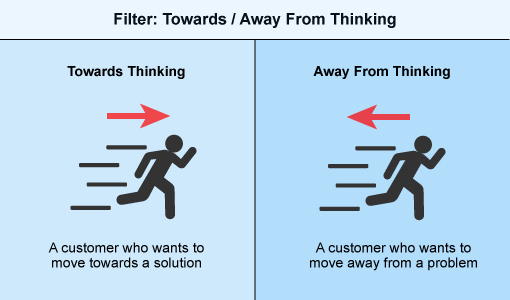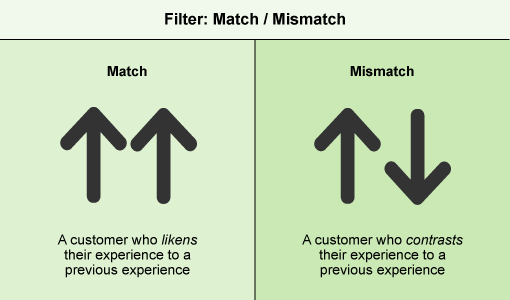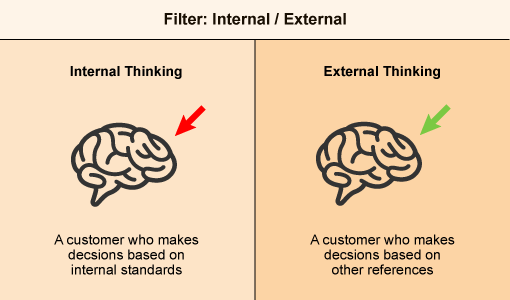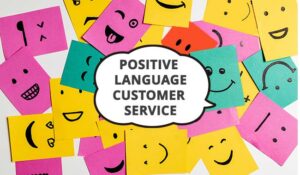Contact centre advisors are often in situations where they just don’t feel that the customer is on the same wavelength as them.
Perhaps the advisor has done their best to build rapport with the customer, but their efforts just don’t seem to be appreciated.
The key here is filtering, which highly skilled advisors can use to build rapport, as highlighted below.
What Is Filtering (in Regard to the Contact Centre)?
The following question is often one that divides people: Are you a glass half full or half empty person? But why do people answer this question in different ways?
We all take in millions of bits of information every second through our senses, far more than our brains can manage. Thankfully, our brain doesn’t have to cope with this amount of information. Instead the subconscious part of our brain will filter it, leading to much of the information being deleted and only some being retained.
Why is this important to understand when communicating with customers? Well, the simple answer is that how an advisor’s brain filters information will not be the same as a customer’s filtering process.
The customer and advisor are different people, with very different experiences, memories, beliefs, values, etc. These are some of the factors that play a big part in what we decide to let in and what information we keep out.
So, the most important question is: Do you want your customers to retain the information that advisors are providing them rather than deciding it’s not important and deleting it?
Of course, the correct answer is yes, but to do this, we must first examine the ways in which the human brain filters. The three most relevant to the contact centre are highlighted below.
The Three Types of Customer Filter
1. Towards/Away From Thinking
Think about this for a moment. When you think about a goal that you wish to achieve, do you imagine what it will feel like to achieve this goal? Or do you think about what you want to get away from or stop doing?
If you are someone who focuses on working towards a future goal – then you are Towards Thinking.
If you tend to focus on what you want to get away from, such as you want to get away from a ‘boring’ job, or ‘avoid eating unhealthily’, then you are Away From Thinking.
Customers that pose their queries to the contact centre will be thinking in one of these two ways. Make sure the team is aware of this, and ask each advisor to listen very carefully to the customer’s choice of language, to understand which of the two filters they are using.
To help the team understand which filter the customer is using, ask them to consider the following two questions:
Is the customer telling you they want to work towards or find a solution? – If so, they are demonstrating “Towards Thinking”.
Is the customer telling you about the problem and its impact and how they want to avoid more disappointment or to ensure this situation doesn’t happen again? If so, they are demonstrating “Away from Thinking”.

Once the advisor knows which filter the customer is using, they can change their language choices to match it and build rapport with the customer, as demonstrated below.
When the advisor thinks that the customer is using “towards thinking”
Advisors should be encouraged to focus their communication around finding a solution, e.g. “I am very sorry this has happened, Mr Jones. What I’m going to do for you today is work with you to find the best solution.” Or, they could instead ask: ‘What would be the best solution for you today, Mr Jones?’
When the advisor thinks that the customer is using “away from thinking”
Advisors should be encouraged to focus their communication around how they can help the customer to move away from this situation or avoid it happening again.
For example: “I do understand how frustrating the long delay has been for you, Mr Jones, and that you do not want to wait any longer for your refund. I’m certainly going to look into the reason for this immediately, so that we can avoid any further delays.”
2. Match/Mismatch
A customer who sorts for a match will look for similarities between an experience that they have previously had and one they’ve just had. In customer service, a customer will often liken a current service/product to a previous one.
For example, a “match” customer is likely to say something like: “This is the same problem I’ve had before and it’s becoming more and more frustrating. Why does the same problem keep happening?” Or “Companies like yours are all the same – you simply don’t care.”
A person who sorts for a “mismatch” will contrast their current experience with an experience that they have had previously to highlight the exceptionality of the problem.
For example, a “mismatch” customer is likely to say something like: “This is the second time this problem has occurred – but it’s more frustrating this time as I’ve had to wait an extra 5 days, compared to 2 days last time.” Or “You’re worse than my last insurance company – at least they didn’t make excuses.”

When an advisor recognises whether the customer is match or mismatch, they can change their approach to help build rapport, as highlighted below.
If the advisor thinks that the customer is “matching”
When discussing a particular product/service, the team should be encouraged to talk about the similarities that the product/service has to what the customer has had in the past.
Reassuring the customer that the important features that they liked about the last product or service will still be available to them is the key here.
Encouraging advisors to ask the customer about what they liked about previous products/services may enable them to find the best possible solution for the customer.
To make this happen, an advisor could ask a question like: “’Mrs Smith, what features did your last policy/product have that you would like to keep with this policy?”
If the advisor thinks that the customer is “mismatching”
When discussing a particular product/service, the team should highlight the differences between products, noting any features which are more suitable to the customer’s needs – if known.
To do this, advisors may find it helpful to use a statement similar to the three that are shown below.
- “Mrs Smith, what additional features would you be looking for in this product compared to the one you currently have?”
- “Mrs Smith, I would recommend going with this option because it has a much quicker processor than …….but still provides all the other features you liked about your previous product.”
- “’Mrs Smith, listening to what you’ve told me, I do understand that you want a solution which will give you more peace of mind, as well as being a more simplified process. Let me look into achieving this for you.”
3. Internal/External
This filtering type covers the process that customers go through when making decisions.
An “internal” person gathers information and makes a decision based on their own internal standards. They resist someone who is trying to tell them what to do – particularly if it is based on what other customers think.
If a customer makes a comment similar to: “Tell me what options I have, so that I can decide what will work for me,” it is a clear hint that they are an internal person.
Whereas an “external” person needs references. They like to hear other people’s opinions to help them make a decision. They also find it useful to know what other customers have found useful.
An example of a customer that is clearly an “external person” is one who says: “What have other customers thought of these products/options?” Or “If I opted for ……… do you think that would be useful for me?”
When presenting options to the customer, the advisor would ideally know whether or not the customer is “internal” or “external”, in the interest of rapport building. If so, it might be useful to go by the following advice.

If the advisor thinks that the customer is an “internal person”
Provide the customer with useful information, such as facts and figures, and ask them for their thoughts and ideas.
For example: “Mr Thomas, having heard the details of the 2 options we are able to provide today, what do you think would be the best option for you?” Or “Mr Thomas, what information would you like me to provide so that you can make the right choice for yourself today?”
If the advisor thinks that the customer is an “external person”
The advisor would ideally help the customer to find the best solution by providing their thoughts and also what they know has worked for other customers.
For example: “Mr James, many of our customers have found this option beneficial for them because… Is this something which would work for you?” Or “Mr James, after comparing both options, I can share with you which product has proved to be more popular with our customers. Would this be useful for you?”
Conclusion
If two people use the same filters in conversation, this will often lead to a more productive conversation as well as build rapport. Equally, if they are using very different filters, then this can often lead to frustration.

Jacqui Turner
By understanding each of the three filters above, advisors will be better able to “speak in the same language” as the customer and thereby develop flexibility in the way that they choose to respond.
Try it and, hopefully, your contact centre team will never have to ask themselves the following questions again: “Why don’t they get what I’m saying?” / “Are they deliberately trying to be awkward?”
Maybe it will even help internal communication between colleagues and boost the atmosphere in the contact centre.
Have you ever tried to train advisors in using these filters? What have your experiences been like?
Please share your thoughts and experiences in an email to Call Centre Helper.
Thanks to Jacqui Turner at Turner Corner Learning Solutions
Author: Robyn Coppell
Reviewed by: Megan Jones
Published On: 12th Feb 2018 - Last modified: 28th Feb 2024
Read more about - Skills, Communication, Handling Customers, Jacqui Turner, Language, Rapport



































